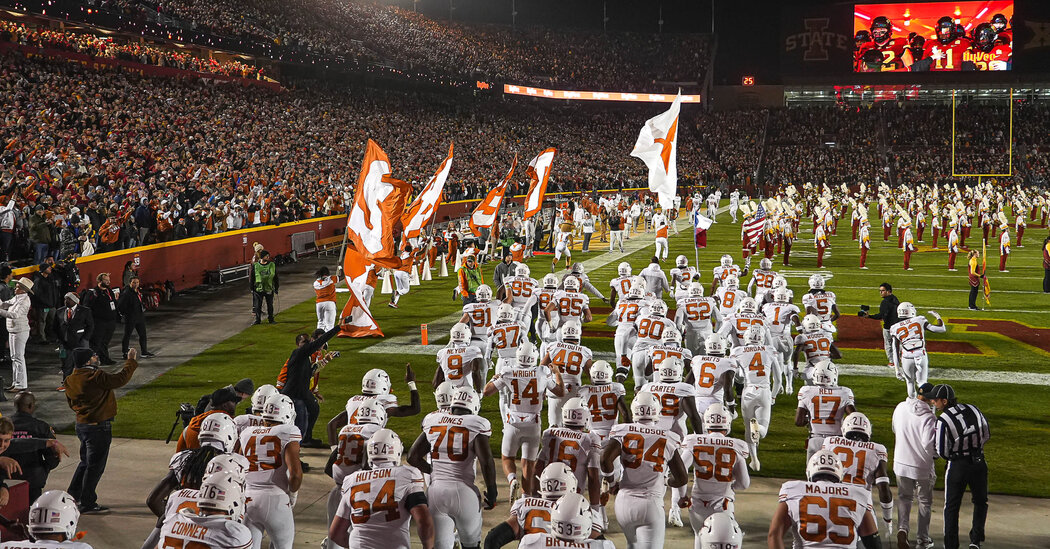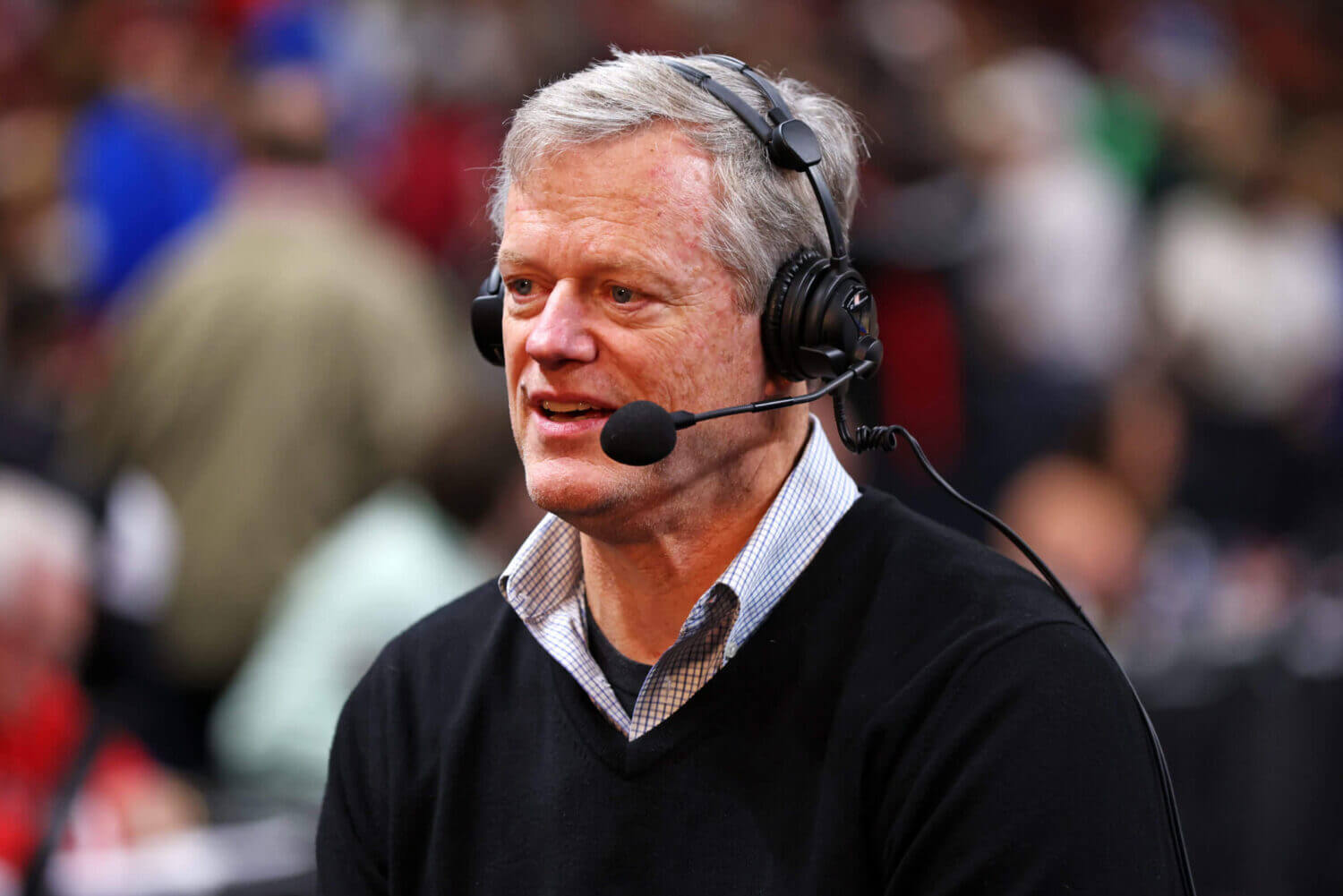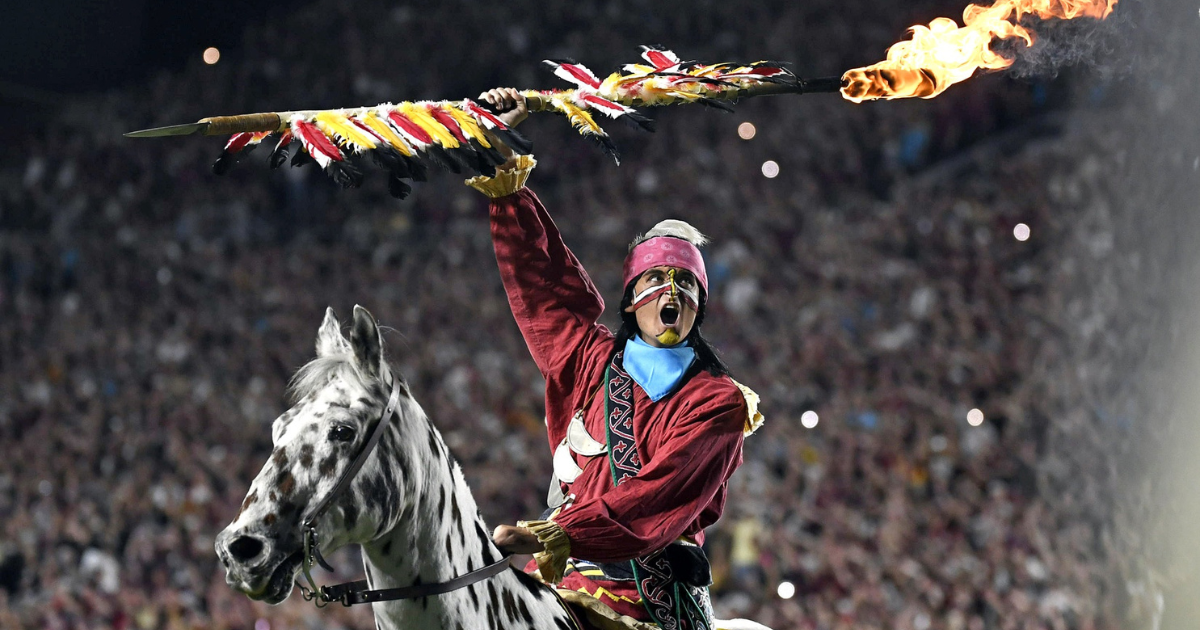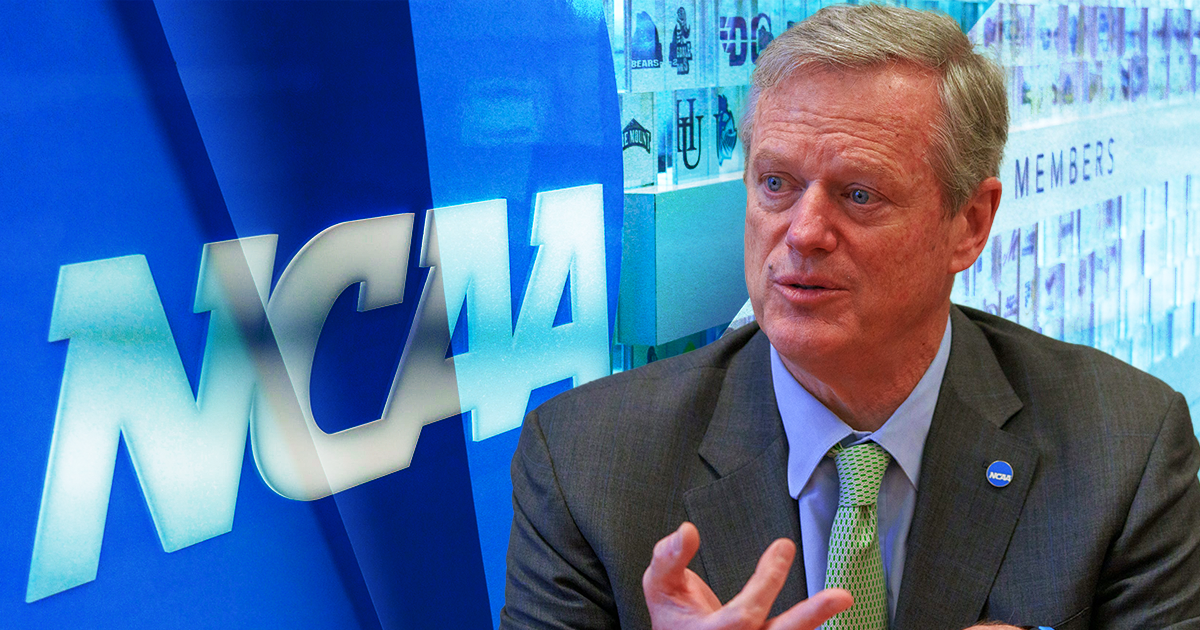BeachBumDeac
Cheap Date
- Joined
- Mar 17, 2011
- Messages
- 27,706
- Reaction score
- 15,300
So why post it thenThese short excerpts don't say anything of substance and his writing style is wordy and disorganized.
So why post it thenThese short excerpts don't say anything of substance and his writing style is wordy and disorganized.
To show how out of touch he was with likely changes in the NCAA’s sacred amateurism model during the years when he was supposedly a major leader in the world of college sports.So why post it then
The article in the N&0 described his words as coming from an “essay” that he wrote, not an interview.It's an interview, right? Most people are a little wordy and disorganized speaking off the cuff in an interview.

The four teams in the College Football Playoff used cash payments from fan “collectives” in unique ways to build their rosters, showing how much an influx of money has changed college sports.
...Players say the groups’ payments have been a welcome, and long overdue, addition to their scholarships. “It’s the least they could do, is pay us a little bit for the hours we put in,” said Alabama wide receiver Isaiah Bond. “We’re walking around some days like we’re 85 — and we’re 19, 20 years old,” he said, describing the physical toll games can take on players.
Mr. Bond said that he had not realized how much money college football generates for the school: at last count, $131 million annually. “What they’re contributing back, it’s nothing compared to what they’re making,” he said. “But it helps.”
...At Texas, the collective has paid $14 million to Longhorn athletes since 2021, according to statistics kept by the school. That’s 64 percent of the total payments to Texas college athletes from any source, and more than all the money from the shoe companies, sports drinks and other brands the system was built to serve.
The result: an influx of money to players, even those too obscure to have much value as endorsers. Mr. Williams, the offensive lineman, bought his mother her first iPhone. Adonai Mitchell, a wide receiver who caught touchdown passes in the last two championship games at Georgia, bought his 2-year-old daughter what she wanted for Christmas.
“I got her a kitchen. That’s her favorite thing,” he said. “I’ll call her and she’s like, ‘I’m making carrots!’”
Texas’ collective set another pattern that more than 70 other collectives followed: It organized itself as a tax-exempt charity, meaning its donors get a tax deduction. The groups have justified their charitable status by paying athletes to visit sports camps and hospitals, or to post about nonprofits on social media.
But now, these charitable collectives have a problem: the I.R.S.
After initially approving dozens of collectives for tax-exempt status, the I.R.S. seemed to reverse itself in May. It issued a memo saying that collectives might not qualify as tax-exempt after all because their real purpose was to pay players — not to serve the public good.
“You can’t just take a collective or a booster club, turn it into 501(c)(3) and then just pay everybody just whatever the heck you want to pay them,” said Andrew D. Morton, a nonprofit-law attorney at the firm Handler Thayer, citing the tax code section that describes tax-exempt charities.
Mr. Morton said the I.R.S. could shut the collectives down or impose penalty taxes if they do not change course.
Texas’ collective says it is considering changes that would overhaul its spending and give a larger portion of its money directly to other charities.
For now, Mr. Peterson said the group is looking for charity work valuable enough to justify what it pays football players. But the collective paid football players $1.8 million this fall alone. What kind of part-time charity work would justify that?
“If you carve football out of this, all of this probably works,” Mr. Peterson said. But he said the collective cannot carve out football: It accounts for 81 percent of all the money it spends.
...One for-profit company called Yea Alabama releases few details about what it raises or spends. The company even declines to describe itself as a collective, calling itself merely an “entity.”
Alabama’s other collective is a tax-exempt charity called Walk of Champions. One of its board members, Elliot Maisel, told The Times earlier this month that the university had told his collective how much to pay each team. Mr. Maisel estimated that the amount for the football team worked out to $2,500 per month, per player.
“The coach and the athletic department determine all that. We don’t have that discretion. We don’t want it,” Mr. Maisel said.
N.C.A.A. rules bar university staff from “securing or negotiating deals” on behalf of student athletes. The organization, however, has shown little appetite for a crackdown on collectives that are too close to their schools. In fact, its most recent proposal would allow schools to take over the collectives’ work and begin paying athletes directly.
...Washington’s collective, Montlake Futures, had struggled to find its footing in what amounted to a chaotic start-up industry. So a little more than a year ago, Andrew Minear, who had built a career as a nonprofit fund-raiser in Seattle — including nearly a decade raising millions in Washington’s development office — was brought in to lead the program.
Mr. Minear wanted to keep money from being the reason Mr. Penix and others would leave for the N.F.L., which offered a minimum salary of $750,000 this season. “It wasn’t a sticky note with a dollar amount,” he said. Nor was there an attempt to match their draft projection with a dollar value.
Instead, he said, the collective laid out a plan for the players to maximize their endorsement value by working with nonprofits, which would burnish their brands when they turn pro and their legacy in the community.
Mr. Minear said the collective’s revenues, which cover athletes for all sports, have improved to about four times its federal filings for 2022, which were $2.02 million. (Washington’s athletic department projected an $8 million deficit for the 2024 fiscal year, according to The Seattle Times.)
...The setup at Michigan, which, like Washington, struggled to find its N.I.L. bearings, may signal what the rapidly evolving future of college football looks like if revenue sharing — something that Wolverines Coach Jim Harbaugh has publicly backed — becomes a reality. Money will likely be spread somewhat evenly around a locker room with star players earning more through separate endorsements.
Hail Impact was formed as a nonprofit, whose objective is to establish baseline payments to every Michigan football player.
Champions Circle is a for-profit operation, and last year created the One More Year Fund, which raised money to help convince players who might be on the fence about leaving for the N.F.L. to return. Whereas many collectives have leaned on donors for funding — a model that some view as unsustainable — Champions Circle has also sought to raise money by selling high-priced experiences to well-heeled Michigan fans.
Originally NIL was going to be all about compliance, then it wasn’t. The Alston case decision issued nine days before NIL compensation was set to be allowed by the NCAA made it clear the NCAA’s safe harbor from antitrust laws was in serious jeopardy. Since then, the pace of change continues to increase, sometimes on a daily basis. The radical change that NCAA President Charlie Baker proposed on Dec. 5 and the confluence of other recent events have set the stage for what is to come in the conversation around athletes and money.
As an unbiased NIL educator and adviser to athletic departments across the country, here is my take.
Revolutionary change is afoot.
In October, the NCAA NIL subcommittee met to revisit the rules around NIL. No decisions were made. However, the meeting itself was significant evidence that a door may soon open to a world where college athletic departments could, one day, maybe soon, be allowed to actively assist their athletes in securing NIL deals.
On Nov. 3, after nearly three years in the legal system, athletes were granted class certification in antitrust case House vs. NCAA. Athletes were divided into three classes: one class for football and men’s basketball players, one class for women’s basketball players and another class for all other Division I athletes. This means that the athlete empowerment tables are turning in a big way, and the NCAA could be at risk for some major losses.
On Dec. 1, 32 female athletes filed a lawsuit against the University of Oregon citing Title IX violations. Part of their complaint cites disparate NIL opportunities related to lack of support and exposure to the media of female athletes compared to their male athlete peers.
Simultaneously, we continue to see an uptick in VC and private equity investments in sports -- specifically companies that touch the NIL marketplace. Marketing agencies focused on NIL will be positioned to jump at the precise moment athletic departments are given the green light on securing and optimizing their athletes’ endorsement deals.
This shift to bringing agencies into the deal mix, while intended to expand the financial prowess of student athletes and their families, is going to come with its fair share of risk.
To me, it feels quite like we’re moving closer and closer to a place where student athletes may be compensated through a revenue share model. At a minimum, based on Baker’s plan, it seems a high probability that more student athletes are going to make more money. Could this mean unionizing? Could this mean restructured sponsor contracts with NIL carve-outs? Could this spark the beginning of the in-house NIL agent? Major third-party rights holders?
As schools potentially become more involved with facilitating deals for student athletes, yes, there will be more money, but there will also be more risk. Much more, in fact. Athletics administrators have to understand and accept that this shift in the NIL playing field is a real possibility. They need to be ready for it. The money, the risk, all of it.
The bottom line is that as compliance loosens its grip on the NIL landscape, higher risk calls for higher education. And isn't that the point?
Courtney Altemus (caltemus@advanceNIL.com) is CEO and co-founder of Advance NIL

PHOENIX — One month after proposing that the richest schools in college sports be able to pay their athletes directly, NCAA president Charlie Baker said he and other administrators are happy to be “finally talking about the elephant in the room.”
Baker, speaking this week at the annual NCAA convention, told NCAA members that he has received a great deal of feedback to his proposal, which he has dubbed “Project D-I,” and that while some administrators and coaches may “quibble” with some of the details, he believes it’s serving its purpose as a conversation-starter.
On Thursday, the NCAA Board of Directors assigned the Division I Council to explore Baker’s proposal.
The most notable part of Baker’s letter, which was not a formal proposal, would create a new FBS subdivision where schools that can afford to pay athletes annually through a trust are able to opt in and govern themselves separately in certain areas. The initial proposal included a minimum investment of $30,000 per year to at least half of a school’s athletes, with equal monetary opportunities for male and female athletes. Another part would move NIL activity in-house under the schools’ control. Baker acknowledged that the proposal is designed in part to convince Congress to help the NCAA, as various courts and the National Labor Relations Board debate the employment status of athletes.
“To maximize these opportunities, it will be important for Congress to provide special status to student-athletes,” Baker said. “That way, schools and conferences can engage in NIL and enhanced educational support without turning them into something they are most definitely not – employees. …
“Converting student-athletes into employees would alter virtually every aspect of their academic and athletic experience. It would also turn the way schools administer their athletic and academic programs upside down. … I believe key lawmakers are getting the message about why employment is not the right answer and are seeking other ways to do more for students. We are all in on that discussion.”
The potential changes also need to go through the laborious NCAA legislative process. Although August has been targeted as a possible adoption point for at least some of the changes, Georgia president Jere Morehead, who chairs the Board of Directors, acknowledged he couldn’t predict where this Project D-I process would lead.
“I think we’re running out of time,” Morehead said. “We need to get going, particularly in Congress, and I applaud Charlie for getting this conversation going.”
Baker touched on a number of other topics during his annual State of College Sports address and in conversation with reporters this week at the NCAA convention. Here are the highlights.
Title IX concerns
College athletics leaders remain confused about the application of Title IX and its impact on name, image and likeness (NIL) payments. It’s not quite clear whether NIL deals with collectives or other non-university entities need to adhere to the federal law that prohibits sex-based discrimination. Baker said that the outcome of a lawsuit in Oregon regarding Title IX’s application to NIL activity should bring some clarity, though he still does not know whether male and female athletes need to earn the same amount of money through NIL or whether they need to have equal participation/deal opportunities. Baker hopes that the Department of Education will help provide clarity soon.
“(Title IX) terminology is more about equal participation,” Baker said. “It’s not so much about equal amounts. … We’ve made incredible progress to get to where we’ve gotten on women’s sports, and I would hate to see us lose it.”
Officials often raise concerns about Title IX when discussing potential employee status for college athletes as well. Without clarity on how the law is applied, it’s hard to know for sure what it means for a potential alternate financial model...

...Speaking to reporters in November, Matt Rhule was honest about the current marketplace in college sports. The sitting Power 5 head coach was blunt about the cost of landing an elite quarterback in college football’s free agency, stating “a good quarterback in the portal costs $1 million to $1.5 million to $2 million right now.”
Rhule’s words were the most clear-cut description of how NIL has reshaped the landscape. As has been reaffirmed by multiple agents, top talent is being paid in the sport. Plus, athletes aren’t afraid to enter the transfer portal just to figure out their worth.
Thursday night’s news was a sign the NCAA is going to enforce its rules and not allow for “chaos” — even if it has become more business-like. Speaking to a range of NIL collective leaders on Thursday night, they echoed frustrations and described the NCAA’s move as a joke.
“It’s ridiculous,” one source said. “You might as well just punish everyone. Nobody is innocent and you can’t allow your program to fall years behind.”
Added another leader: “Part of me is losing faith in them at a rapid pace. Every move they make is more and more embarrassing.”
...College leaders have grown more and more frustrated with the NCAA for its lack of enforcement related to NIL activities, specifically recruiting inducements and pay-for-play. Both commonplace in college football, the NCAA has commonly referenced a lack of evidence as a driving factor to the few number of penalties.
That all changed on Thursday, yet it remains to be seen if this is an outlier or the start of a pattern. It also comes on the same day the NCAA Division I Board of Directors formally tasked the Division I Council with working on specific recommendations related to Charlie Baker’s progressive plan for the NCAA, which would establish a new subdivision for like-minded, highly resourced schools to craft their own policies and directly pay athletes at least $30,000 annually through a trust fund.
When that plan could truly be put into place remains to be seen. The NCAA has not found much movement in pushing Congress for federal legislation.
But the NCAA made its move, sending a message to collectives and schools that NIL infractions won’t go unnoticed. Thursday could mark the beginning of a new era for NIL.

...Shifting NIL activities under schools’ umbrellas would be a radical departure from the current model consisting of collectives. More than 200 exist nationwide that distribute money to athletes, increasingly for recruiting and retention purposes and mostly to male athletes.
North Carolina Athletic Director Bubba Cunningham told On3 shortly before the NCAA unveiled its proposal that “universities are not prepared to bring collectives or other elements of NIL in-house. There are too many unanswered questions about employment, compensation, antitrust, Title IX and Title VII that must be considered.”
Opinions are mixed. A wide swath of industry leaders have long told On3 that moving NIL activities in-house would have several benefits.
It would address the fatigue of donors, who have been increasingly pulled between donating to collectives for NIL activities and donating to athletic departments for facility upgrades, etc. It would also streamline an athletic department’s fundraising efforts, enabling both parties to row in the same direction. And with the muscle and branding of the university behind it, it could add more credibility to the NIL operation.
There are potential challenges. Collectives have long distributed the vast majority of their dollars to male athletes. If NIL activities moved under the school umbrella, athletic departments could no longer assert they are not in violation of Title IX because collectives are third-party entities.
As Baker himself referenced in his December memo, if and when schools are permitted to enter into NIL deals with athletes, they will need to do so in accordance with Title IX requirements.
Secondly, several sources said schools would be absorbing heightened liability risk...
Here is some reaction to the NCAA's punishment of FSU for violating current NIL regulations. As usual with the NCAA, it is closing the barn door after the cow has already escaped.

What Florida State's NIL violations mean for NCAA, college sports
The NCAA finally made its move on Thursday night, coming down with penalties against Florida State for NIL violations.www.on3.com
Another article in On3.com mentions the pros and cons of moving NIL collectives "in house," i.e. putting them under the control of university athletic departments.

NCAA takes next step on its bold college sports reform proposal
The NCAA D-I Board of Directors has tasked the D-I Council to begin working on recommendations related to the association's reform proposal.www.on3.com
I agree. If Charlie Baker's proposal of $30K per year for at least half of a school's athletes becomes an NCAA guideline, then in order to comply with Title IX, all of the scholarship athletes on WFU's women team sports would probably have to receive that amount while only fewer than half of the male athletes on men's team sport rosters would receive that amount.Putting the payments to players under control of University Athletic Departments would bring Title IX along as a major compliance issue.
I was only considering team sports-emphasizing football which throws "equity" under Title IX totally out of whack.You're missing a few sports.
Half the athletes is 114. That's 57 for women and 57 for men. The allotment for each sport would be for Currie to figure out and who gets that allotment on the team is for the coaches to figure out.
Your last part gets at the heart of the issue. If programs were in full compliance with Title IX, this wouldn't be an issue because half the women and half the men on scholarship would get $30K. They aren't now and they probably won't be if this new plan is adopted.
But that's not how Title IX works currently. Essentially every school has more money dedicated to football (scholarships, equipment, travel, etc.) than all other sports combined. Title IX allows for the reality that football is a much larger sport than any other (in terms of teammates), and so schools remain Title IX compliant despite these discrepancies.I was only considering team sports-emphasizing football which throws "equity" under Title IX totally out of whack.
Total scholarships for cross-country & T&F, golf and tennis are not that different for men and women ( 34 for women and 22 for men) . If you include those numbers for both men and women, the picture is about the same.
In other words, there is no way to give all the male athletes in key team sports $30K and all the women in key team sports $30K while maintaining "equity." At Wake there are a maximum 87 scholarships for women and 141 for men (total 228).
If you award $30K payments to half of all your athletes while maintaining equity, as proposed by Baker, then all 87 female athletes get $30K and 87 men (out of 141) get $30K.
Which 54 male athletes get left out?
I don't think the principle of equity under Title IX would allow Wake to award $30K to half the females (43.5) and half the males (70.5).
Based on the scholarship numbers, Wake and many other schools are already not in compliance with Title IX. The Baker proposal just makes it harder to achieve full compliance with Title IX.
If all that money was evenly split among the 363 D1 schools, that would fund 84.5 payments of $30k per school.The NCAA is signing an 8-year, $920M TV deal with ESPN deal that includes all women's sports. Then they're going to be like, "How are y'all going to pay the athletes $30K a year?"
